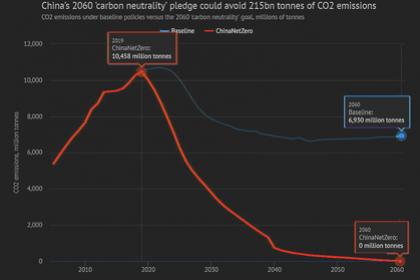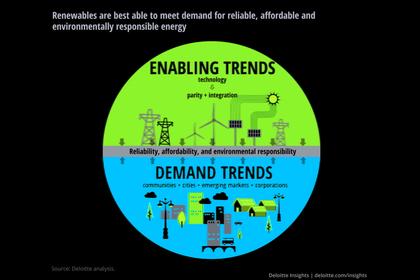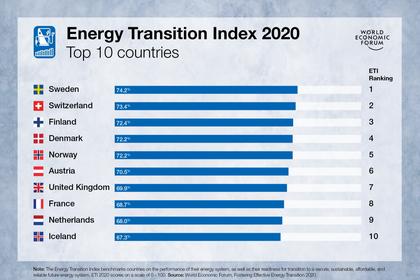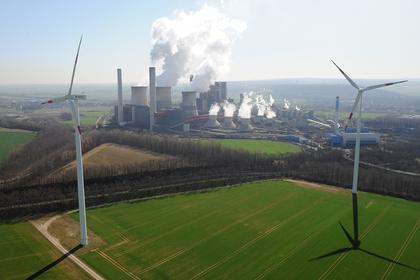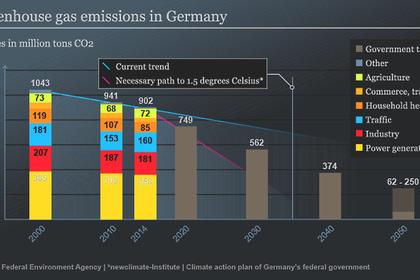
ENVIRONMENTAL SIDE: $10 TLN

By Llewellyn King Executive Producer White House Media, LLC
ENERGYCENTRAL - Sep 21, 2020 - There is an old mindset among environmentalists and those on the political left which sees the battle against global warming – and, therefore, the future of the planet -- as between them and the club-wielding Neanderthals of big business.
Especially targeted in this mindset are electric utilities and carbon producers. The old thinking has it that they want to push coal, gas, and oil on the public no matter what.
But at a time when utilities aim to reach carbon-neutrality, and the oil and gas industries and their trade association, the influential American Petroleum Association, are pushing carbon capture, use and storage, and are investigating various ways of reducing the carbon load of fossil fuels, that old thinking is just that: old, out-of-date, obsolete.
Now the battle is further joined. A powerful coalition of some 70 major financial institutions on five continents with total financial assets of more than $10 trillion has come over to the environmental side, determined to influence the course of events. To that end, they have formed an organization called the Partnership for Carbon Accounting Financials (PCAF) that intends to develop a global accounting standard that can be used by all financial institutions to measure and reduce their climate risk.
The organization counts Amalgamated Bank, Bank of America, Citibank, NatWest, and BlackRock among its partners. In July, Morgan Stanley joined the PCAF’s steering committee. The global financial services firm had formed its own institute for sustainable investing in 2013.
“We are excited to join PCAF and to support the important work they are leading to build a methodology for global banks’ efforts to track and measure climate change risks,” said Audrey Choi, Morgan Stanley’s chief sustainability officer and CEO of the Morgan Stanley Institute for Sustainable Investing.
The PCAF began five years ago in Europe, when a group of Dutch banks, in conjunction with Guidehouse, a globe-circling consultancy, began looking into decarbonizing their lending. The PCAF secretariat is virtual and maintained by Guidehouse consultants under the executive leadership of Giel Linthorst, based in Utrecht, Holland.
In August, the PCAF released its Global Accounting Standard, developed by 16 members and based on the carbon accounting methods already used in several countries. The standard is open for public comment until the end of September. A final version of the standard will be published in November.
In my view, the significance of this coalition hasn’t received the attention it deserves. The PCAF a seminal development in the turning of global business, especially energy producers, toward a carbon-limited future.
In joining the PCAF, Anne Finucane, vice chairman of Bank of America, said, “As a global financial institution, and as an industry, we have a critical role to play in accelerating the transition to a low-carbon, more sustainable economy.”
The carbon reporting initiative will be top to bottom, ranging from huge loans for power plants all the way down to home mortgages. In fact, mortgages are important, according to Jan-Willem Bode, a London-based Guidehouse partner and one of the PCAF lieutenants.
“For example, you can reduce the emissions that exist on mortgages by lending to homeowners who invest in solar panels, which they can put directly on their roof, making the mortgages more resilient by being lower-carbon-intensive,” Bode told me in an interview on “White House Chronicle,” the weekly news and public affairs program on PBS. Builders and developers take note.
Ivan Frishberg, director of impact policy for Amalgamated Bank, said, “Measuring the carbon impact of loans and investments is a fundamental building block for further climate actions.”
The heightened financial sensitivity reflects a general shift toward environmental consciousness in industry, and particularly in the energy sector.
Energy has always been a capital-intensive business and it is turning green. Coal is in steep decline; natural gas is looking at technologies that will reduce its carbon content, like reforming it into hydrogen (blue hydrogen), or mixing hydrogen made using electrolysis of water (green hydrogen) into natural gas to further reduce the carbon footprint.
Electric utilities, though still very dependent on natural gas, are forging ahead with wind and solar, and trying to preserve their nuclear fleets. It isn’t yesterday’s world of industry allied against the environment. Green is emerging as the new business battle plan.
-----
This thought leadership article was originally shared with Energy Central's Energy Collective Group. The communities are a place where professionals in the power industry can share, learn and connect in a collaborative environment. Join the Energy Collective Group today and learn from others who work in the industry.
-----
Earlier:
